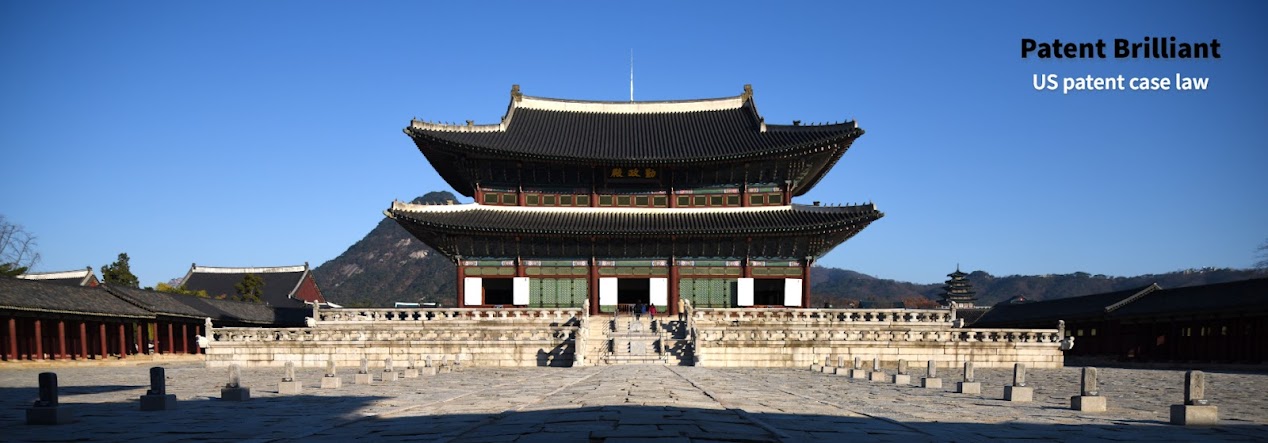Acco
Brands Corp. v. Fellowes, Inc., 813 F.3d 1361 (Fed. Cir. 2016)
본 사건은 특허 심사 중 비자명성 판단에 있어서 prima facie case of obviousness 즉, 심사관과 출원인과의 입증책임 (전환) 에 관하여 판결하였다.
Fellowes
는 US 7,963,468 의 특허권자인데, ’468 특허는
2개의 센서를 이용하여 shredder (세절기) 의 jamming 을 방지하는 것에 관하여 특허 청구하였다. Claim 11 에서, 1센서는 presence
sensor 로써 shredder feed 에 종이의 존재여부를 검출하고, 2센서는 thickness sensor 로써 종이의 두께가 shredder 의 세절 용량을 초과하였는지 검출하며, controller 는
1센서에 의하여 종이의 존재가 검출되고, 2센서에 의하여
세절 용량이 초과되지 않음을 검출한 경우에만 shredder 를 작동시키는 것으로 하였다.
(US 7,963,468 Shredder)
Claim 11은
다음과 같다:
11. A
shredding machine for shredding sheet material, the machine comprising:
a feed-aperture;
an
electric cutting mechanism, the feed-aperture being configured to receive
multiple sheets and direct said sheets in a feeding direction towards the
cutting mechanism for shredding;
a
controller coupled to the cutting mechanism;
a
thickness detector coupled to the controller, the thickness detector having a
part extending into the feed-aperture and being moveable such that said part
will be engaged by sheet material inserted in the feeding direction into the
feed-aperture prior to reaching the cutting mechanism, and moved from a first
position to a second position as a result of said engagement, if the sheet
material exceeds a predetermined thickness;
said
controller being configured to, during insertion of the sheet material into the
feed-aperture, permit energization of the cutting mechanism prior to the part
of the thickness detector reaching the second position and prevent energization
of the cutting mechanism responsive to said part of the thickness detector
reaching the second position; and
a
maximum thickness indicator for providing a visual or audible indication to a
user of the machine that energization of the cutting mechanism is prevented due
to the sheet material moving said part of the thickness detector to said second
position;
further
comprising a presence sensor along the feed-aperture for detecting a presence
of the sheet material inserted into the feed-aperture, the controller being
coupled to the presence sensor and the maximum thickness indicator,
wherein
the controller is configured to start energization of the cutting mechanism
only in response to the presence sensor detecting the presence of the sheet
material inserted into the feed-aperture and the part of the thickness detector
not having been moved to the second position by the sheet material;
wherein
the controller is configured to prevent the starting of energization of the
cutting mechanism and also actuate the maximum thickness indicator to provide
the visual or audible indication in response to the part of the thickness detector
moving to the second position.
Prior
art (JP 5770445, US 6,550,701 등) 에는 2가지 sensor
(presence, thickness) 및 controller 에 대한 개시가 있다. 특히, JP 5770445 (H09-38513A) 에는 thickness sensor 를 채용한 shredder 가 개시되어
있다. JP ’445 특허는 thickness sensor 에
의하여 shredder 의 세절 용량이 초과한 것으로 검출될 경우,
shredder 모터의 작동을 중단하는 신호를 전송하는 것으로 하였다. 다만, JP ’445 특허는 중단된 모터를 다시 작동시키는 것에 대한 기재는 없다.
복수의 prior
art 에는 presence sensor 를 채용하여 획득한 신호로써 controller 로 하여금 shredder motor 를 on, off 시키는 것에 관한 기재가 있다.
Fellowes
는 이러한 prior art 에 의한 claim 11 의
모든 구성요소가 개시된 점을 인정하면서, claim 11 의 특허성은 prior-art elements 의 비자명한 조합 (combination) 이라고
주장하였다.
Reexamination
심사 중, examiner 는 prima facie
case of obviousness 결정하였는데, PTAB 은 특허권자의 주장을 받아들여, controller 가 2가지 조건 즉, (1) presence sensor 가 종이의 존재를 검출하고, (2) thickness
detector 가 종이의 두께가 shredder 의 세절 용량을 초과하지 않는 것을 검출한
때에만 motor 를 구동시킨다는 점이 PHOSITA 기준으로
자명하지 않다면서 심사관의 결정을 기각하였다.
CAFC 의
analysis
Examination,
reexamination 중 prima facie case of obviousness 컨셉은
비자명성 판단 및 입증 책임의 법률적 framework 을 구성한다.
Framework 은 다음의 순서에 의한다:
(1)
Examiner sets forth a prima
facie case, supported by evidence, showing why the claims would have been
obvious in light of the prior art;
(2)
Burden shifts to the patentee
to provide evidence, in the prior art or beyond it, or argument sufficient to
rebut the examiner’s evidence; and
(3)
Examiner reaches the final
determination on obviousness by weighing the evidence establishing the prima
facie case with the rebuttal evidence.
3번째
단계에서, weighing 결과 청구된 발명이 preponderance
of evidence 기준으로 자명한 것으로 판단되면, claim 은 특허성이 부정된다.
앞에서 검토한 바와 같이, 복수의 prior art 에는 claim 11 의 것과 동일한 presence sensor, thickness sensor 및 shredder
motor 를 중지시키는 controller 의 기재가 있다. 따라서, 본 사안의 핵심 쟁점은 PHOSITA
가 그러한 복수의 prior art 를 결합할 것인지 (motivation
to combine) 이다.
다음과 같은 이유로, ordinary artisan 은 prior art 결합 (변형) 하여 claim 11 에
이를 동기를 갖는다:
첫번째, JP ’445
에 개시된 thickness sensor 를 포함하는 shredder
를 변형하여 presence sensor 와 controller
를 추가할 동기를 찾을 수 있다. 왜나하면, ordinary
artisan 은 멈춰선 shredder 의 동작을 위하여, 어떠한 식으로든 shredder motor 를 (다시) 구동시킬 방법이 필요하다. 복수의 prior art 에는 controller 에 의한 shredder 를 재구동 시키는 방법이 알려져 있으므로, 이것을 채용할
동기가 존재한다.
두번째, ordinary
artisan 은 presence sensor 와 controller
를 포함하는 prior-art shredder 를 변형하여 thickness sensor 를 추가하는 동기가 존재한다. 왜냐하면, shredder jamming 의 문제가 JP ’445 특허 출원시점에
공지의 사실이고, JP ’445 특허에는 jam-detection
circuitry – 이것은 해당 문제의 해결을 위한 하나의 시도였음 – 를 채용하였다는
점이 이미 공지였다는 증거이다. 이러한 해결과제는 ordinary
artisan 으로 하여금 thickness sensor 를 채용하여 controller 와 presence sensor 를 갖는 공지의 shredder 에 추가할 동기를 제공한다.
즉,
ordinary artisan 은 jam-detection circuitry 대신 thickness sensor 를 채용하여 shredder jamming 을
개선할 것이므로, claim 11은 prior art 에
의하여 자명하다.


